Last Updated on June 20, 2024 by Michelle
So I’ve never tried to hide the fact that I’m still pretty much a failure at this homesteading thing, in some way, every day. But this week I made it very obvious to tens of thousands of readers that I don’t know basic things that every cow owner should know…
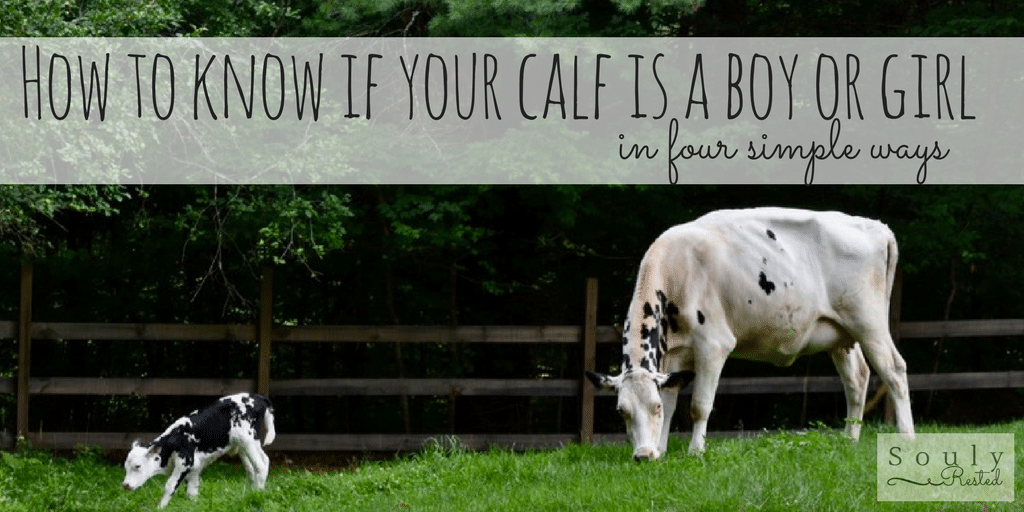
DISCLOSURE: This post contains affiliate links. ♥
Honestly, I’m still embarrassed as I type this, but I’m gonna get over it and share what I learned this week about how to know the sex of a newborn calf. (No, this isn’t rocket science, and yes, I did learn about anatomy in middle school.). You see, my biggest mistake was the fact that for evidence of my calf’s manhood I was indeed looking at an umbilical cord…
Twenty months in the making
Granted, I should give myself a break; I was caught up in the moment of excitement that day. It was the day of the birth of the first ever calf born and bred on our homestead. Scout–a sweet purebred Holstein heifer–has been on our farm for almost 20 months. Kayla, my homesteader extraordinaire and 16-year old going on 30 for maturity and work ethic, saved money for years, working hard as an entrepreneur, to purchase Scout, her first winter’s hay, and all the supplies she needed to fence in a field for Scout around her stable. (She was even interviewed by CNNMoney for her entrepreneur efforts.)
Kayla immediately had Scout bred, as soon as she purchased her. At least we thought. Scout went on a 6-week “vacation” with “friends.” (Aka, we trailered her to a neighbor’s farm where they were keeping a bull to breed with their own cows for a few months.) We eagerly waited for the day when we’d have fresh milk on the farm. Maybe I should explain–because I’ll admit I didn’t understand how it all worked a few years ago–a young female cow doesn’t produce milk until she has given birth. Once she calves, she produces plenty of milk for her baby and for a whole family too. So for 20 months we have had a milk cow but no milk. (Notice me–the unexperienced homesteader–hanging her head in shame here.)
Sadly, the first attempt at breeding didn’t work. Thankfully, the second attempt, last fall, was the charm. So, you can imagine, after 20 months of very eager anticipation, we were over-the-top elated when the calf arrived last week.
A beautiful morning
My college daughter, the engineer student of this Language-Arts-kinda mom, was home for the weekend. She noticed Scout’s boisterous “moo”s very early in the morning. She went to investigate and then came into the house rousing us all from our slumber with elated screams, “Scout had her baby! The baby was born! We have a calf!”
We all ran to the field in our PJs and boxers to see the sweet black and white, big-eared adorableness already standing (albeit very unsteady) and cleaned. She spent her first day lounging in the shade–while being smothered by her momma’s pampering–meeting the other farm inhabitants who wandered her way, learning how to nurse, and, yes, incorrectly being called a “boy.”
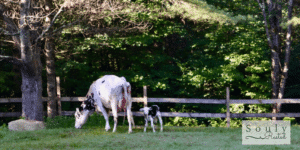

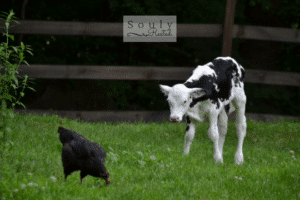
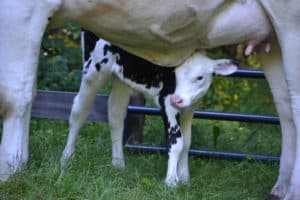
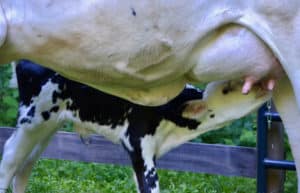
Of course, because I’m a homestead blogger and I immediately share all big excitements on my facebook page, poor Selah was known as a boy her first full day by tens of thousands of people sharing the excitement and offering name suggestions (all male, of course).
You can see the calf’s umbilical cord in that last picture. Yes, that’s the evidence of my ineptitude. If I had just done a few other things before announcing to the social media world that I was inept, I could have saved face. But, alas, my readers already knew I don’t really know what I’m doing when it comes to this homesteading thing…
Four simple ways to know the sex of your calf
So here’s what I should have known about sexing a cow, because well, I do have a cow on my homestead…
Basically, if I had done any of these four simple things, I could have known that “he” was indeed a “she.” But the last one is my favorite because it doesn’t even require disturbing momma and baby, if you’re simply able to sit and observe them for a while.
1. Look under the tail
It’s really as simple as it sounds. Lift the tail of the calf and look for the male anatomy. The testes or the vagina are located right in front of the anal opening. But don’t be surprised if it’s not extra easy to spot.
2. Feel under the tail
Sometimes on young calves it’s not easy to see the male or female parts. So if you’re not sure by looking, you can feel under the tail. Again, you’re feeling right in front of the anal opening.
3. Peer under the belly
I’ll be honest, I had no desire to invade the sweet moments of that morning by feeling all around for cow testes, so I simply looked under the little one’s belly. My fault was that I didn’t look back far enough. I noticed the remains of the umbilical cord and thought I had discovered the proof of manhood. But to properly ID a calf, one needs to look far back, between the back legs and the stomach. The stomach is where the umbilical cord will be visible.
4. Watch the calf pee
In my opinion, the best way to sex a calf is to simply, patiently, wait to witness it relieving itself. Out the back? You have a heifer. From the belly? You have a bull calf.
So, after receiving hundreds of suggestions for a bull name, I was in the field and observed the “bull” peeing like a heifer. Then I had to eat humble pie and announce a plot twist to my facebook readers.
How we chose a name
Once I announced my error, sweet suggestions for girl names started flooding in. We narrowed it down to three options. We liked “Jem,” sticking with the To Kill A Mockingbird theme, since the Momma was named “Scout” after the feisty, innocent, lovable main character of the classic book. We also liked “Maple,” since we are a small maple syrup production farm, and my book Sweet Maple is in production, and the adorable heifer–with her white face and abundantly curious ears–sure is sweet. And then there was the name my engineer suggested a few weeks prior, when she learned that this Hebrew word could be a reminder to “chew on” God’s goodness she decided it was a perfect name for a calf: Selah.
In the end, we named our sweet new heifer the name that sums up our feelings and emotions the last 20 months while we were waiting for her. You see, in the almost 2 years we’ve longed for a calf and the fresh milk that goes with it, we’ve weathered many heartaches in our family.
From one daughter’s battle with chronic pain. . .
to her diagnosis with an incurable neurological syndrome.
From my mom’s cancer diagnosis to the loss of both my parents so suddenly. . .
We’ve been struggling to keep afloat, but always, continually, we were buoyed by the prayers of friends (and even strangers) and by the assurance of God’s presence and grace every step of every difficult day.
While “Selah” does mean “chew on” or think deeply, it is also a musical term that has many possible Hebrew meanings from its 74 occurrences in the Psalms and Habakkuk, but it could have represented a pause and a praise. Bible scholars disagree on its numerous nuances, so I won’t try to truly define it, but I will share what it means to us. It’s a meaning that seems so very appropriate referring to the difficulties our family has weathered recently.
To us, “Selah” is a reminder to think deeply on the heartache God has allowed in our life. Heartache, in God’s economy, is always for our good and His glory, even though it never seems that way in our economy, in the midst of the difficulties. So “Selah” is a reminder to us to “chew on” God’s goodness–not unlike a cow chews on her cud–and then, while we’re paused, offer praise. Because when you think deeply on God’s loving character, and when you take time to notice His gracious hand in even the most difficult, literally painful, nights, you can’t help but praise him.
I should be honest here. The praise never came instantly to me these last few months. I fumed with a stiff fist at God through many of the worst weeks of my life this spring, weeks I sat utterly helpless by my daughter who was writhing in scream-worthy agony. But He graciously never left her or me. When we sat crying in dark ICU rooms so far away from family and home and so deeply intimate with misery, He was there. I always felt His presence, and I couldn’t deny His obvious provision and direction to help my daughter in miraculous ways as the weeks unwound. The more His grace unfolded, the more my heart melted, recognizing His love.
So to our family, “Selah” means to pause, think on God’s goodness in every situation, and then give Him praise. Selah’s birth was the most beautiful, fluffy-soft reason for praise that we’ve had for a long season of difficult days.
In this video, Selah was just an hour or two old, still working on figuring out how to use her legs, and she still hadn’t attempted nursing. Scout was working hard to prompt her in that direction . . .
++++++++++++++++++++++++++
Join me for a few minutes on my farm and meet Selah. While you’re there, I’d love for you to follow my youtube channel.
++++++++++++++++++++++++++
Glance at my Resource Page if you’d like a glimpse of all the supplies I use and recommend for everything from owning a dairy cow, to gardening, to homeschooling, to nature journaling, to maple syrup making.
| | | | |
| | |
Pin this for later!
Just hover over the image for the Pinterest logo.–>
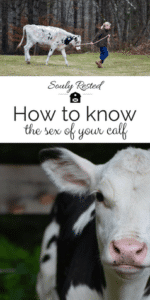
Glance at my Resource Page if you’d like to get a glimpse of all the supplies I use and recommend for everything from gardening, to homeschooling, to chicken care, to nature journaling, to maple syrup making.
Many readers often ask what camera I use to take the images you find here on SoulyRested. I love my Nikon; you can read more about my camera and even purchase your own here. And for the first time in a post, ever, I included a picture from my new phone.
And hop over here to find out why SoulyRested was considered to be one of the Top 20 Must-Read Homesteading Blogs of 2018.
I’d love to connect!
To find me in some other neck of the woods, just click any (or every!) icon below:
And please follow along!
Please take a second to follow along here on SoulyRested to catch up on a few of my memorable mishaps, discover fascinating things about my centuries-old farmhouse, glean a little parenting/homeschooling insight from this momma who’s been failing at the effort for almost 2 decades, or enjoy the inside scoop on the secrets other legit homesteaders might not tell you.
I hope my focus always encourages you, because simple joys require hard work. Let’s face it, we all need all the encouragement we can get! As soon as you subscribe (in the box at the end of this post), you’ll have immediate access to my Resource Library, which includes my FREE EBOOKs, and amazing recipes for things like whoopie pie cookies, maple sap switchel, and my grandmom’s perfect pie crust.
If you already ARE a subscriber, just hop over to the Resource Library here and enter your personal password. (If you don’t remember your password, no fear, we always include a personalized reminder in every Thursday email, “Hard Work, Simple Joys.”)

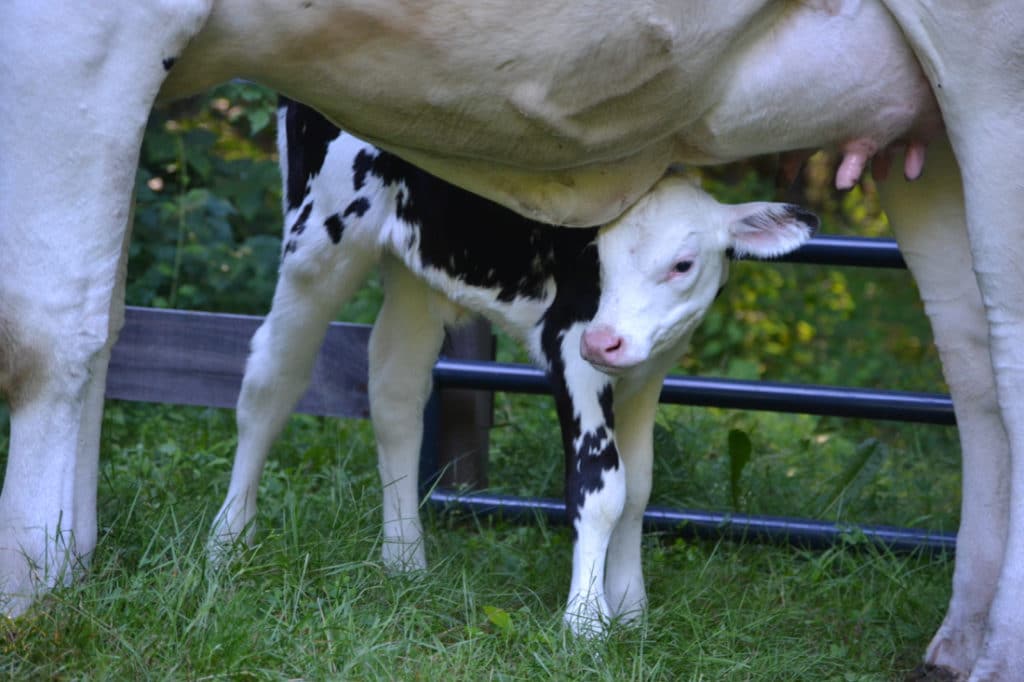




Beautiful story, Michelle. We are all imperfect and make mistakes! As a newbie calf “mother” yourself, I wouldn’t be too embarrassed. I’m sure I wouldn’t have known the difference, but it’s good to know for future reference 🙂 I hope this beautiful baby girl signifies a turning point for you and your family. The rough times can be so hard, but boy is God good!
Thank you, Danielle, you summed up my hopes exactly… that Selah’s birth is the start of a new chapter. But God has absolutely taught me these last few difficult months that whatever the situation, and whatever pain we main still be asked to endure, He is good–in all the depths of the word–and I need to accept every situation where His sovereignty places me.
We’ve been at this homesteading thing for nearly twenty years and still haven’t gotten the hang of it. Each year I learn something that seems should be so basic. Or have a callosal failure — even the zucchini didn’t grow last year.
Thank you, Susan, for the reassurance. I’ve been at it 3 years and feel I’ve barely scratched the surface of all I need to know!
Oh, Michelle – you make me smile. I’ve been following along with your journey for awhile now, and you already have super bonus points for teachability and humility, which count a whole lot more than calf sexing skills in my book! I cow-sat for a neighbor once when we lived in VT, and unknowingly lost a very tiny but very important piece of the milking machine in the muck of the barn on my first day. After much sweat, frustration, and tears, I ended up having to call a neighboring farmer to help me figure the thing out. He did, and all was well, but it was a good lesson in feeling foolish. 🙂 It isn’t a feeling I enjoy so much, but I guess if it keeps me from the greater evil of pride, well, good deal, I guess. Congratulations on your calf, beware mastitis, and if you use a milking machine, make sure you have all the parts. 😉
Thank you for your kind words as well as reassurance, Laura. I guess I need to read up on what to look for with mastitis and sure hope I don’t have to learn any lesson the hard way with that!
What a lovely story, Michelle. I had a goat kid named Selah, and there is a story in that name as well, a story of God’s preparation and provision, and in the end, His goodness.
I used to breed Maine Coon cats and have to sheepishly admit that I had a few kittens who were visited by the gender-change fairy. 🙂
Your photos of your adorable new Selah are so beautiful! I’m so glad she’s a she!
Thank you, Kathi, for reassuring me that I’m not alone in my gender-identifying inadequacies. 🙂 How fun that you had a goat named Selah; it’s a very good name.
Oh my…sorry, but I had to laugh, and smile, and remember….shortly after my 4th left home fate moved me onto 5 southern acres! Like you one of the first things I wanted was fresh milk….soooo…did I buy a cow? Oh no. I bought a VERY pregnant goat (thanx to 4H).. I’d never lived on a farm in my life before. Finally a very kindly neighbor showed me how to round her up, contain her (by putting her between the gate and the fence), and how to milk her while sitting on an upside down 5 gallon bucket.while her baby jumped all over me, which is very different from milking a cow…and like you my story went on. I too am very thankful for all that I had “His” help with, so many times. Can no longer do such, but I would certainly suggest you think more than twice before giving up on homesteading. Chances are there is much to follow that will make you light up.
Awwww, I LOVE picturing this Marianne! And thank you for your encouragement. 🙂 And since you mentioned my discouragement about homesteading, I’m guessing you found this post from another… maybe this one?–> https://soulyrested.com/2018/01/16/hardest-thing-homesteading/